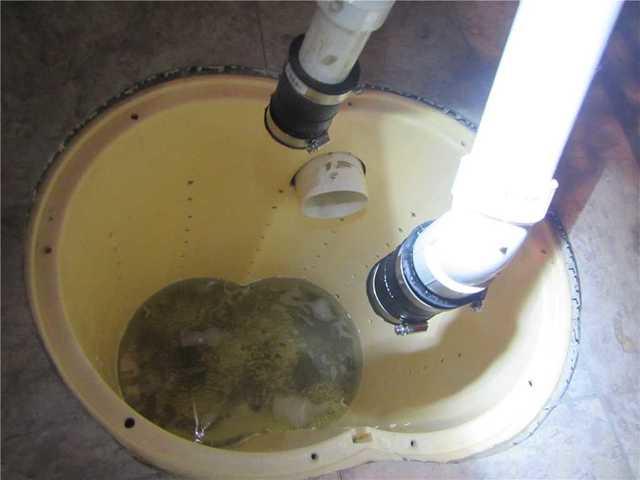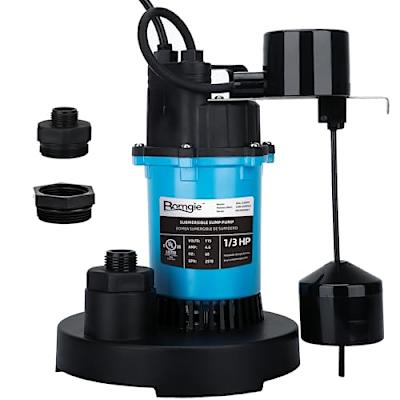An Comprehensive Guide to Taking Care of a Sump Pump
An Comprehensive Guide to Taking Care of a Sump Pump
Blog Article
Just about every person may have their private piece of advice about How To Effectively Clean A Sump Pump.

Sump pumps are important parts in several homes, specifically in locations vulnerable to flooding or too much dampness. They aid avoid water damages by successfully getting rid of excess water from cellars or crawl spaces. Nonetheless, like any other home appliance, sump pumps call for routine upkeep to guarantee they function properly when needed the most. Cleaning your sump pump is a vital part of its maintenance, and understanding exactly how to do it effectively can conserve you from costly repairs and potential catastrophes.
Introduction
Preserving a clean sump pump is crucial for its correct performance and durability. Ignoring this crucial job can bring about obstructions, breakdowns, and eventually, water damage to your residential property. As a result, discovering how to clean up a sump pump is important for property owners that count on these devices to maintain their cellars dry and safeguarded.
Signs of a Dirty Sump Pump
Knowing when your sump pump requires cleansing is vital for avoiding possible malfunctions. Some usual signs that suggest an unclean sump pump include odd sounds throughout operation, minimized water flow, and noticeable particles in the pit. If you observe any one of these signs and symptoms, it's necessary to cleanse your sump pump without delay to avoid any type of additional concerns.
Preparing for Cleaning
Prior to you start cleansing your sump pump, it's essential to take some security precautions. Begin by turning off the power to the pump to avoid any electric accidents. Furthermore, put on appropriate safety equipment, such as handwear covers and safety glasses, to secure yourself from dirt, particles, and prospective microorganisms.
Understanding the Sump Pump
Prior to diving right into the cleaning procedure, it's vital to have a fundamental understanding of how a sump pump functions. Normally installed in a pit or container below the cellar floor, a sump pump contains a number of vital elements, consisting of a pump, a float switch, and a discharge pipeline. When water accumulates in the pit, the float button turns on the pump, which after that pumps the water out with the discharge pipe, away from the building's foundation.
Detailed Overview to Cleaning a Sump Pump
Shutting down the Power
Begin by separating the power supply to the sump pump to stop any kind of mishaps while cleansing.
Checking for Appropriate Functioning
Prior to reinstalling the pump, execute a quick test to make sure that the float button activates the pump properly. Put some water into the sump pit and observe the pump's operation. If everything is working correctly, you can reconstruct the pump and reconnect the power supply.
Eliminating Debris and Dust
Use a container or a scoop to get rid of any kind of visible debris, dust, or debris from the sump pit. Dispose of the debris appropriately to prevent it from blocking the pump or the discharge pipe.
Cleaning up the Pump and Float Switch Over
When the pit is free from particles, thoroughly eliminate the pump from the pit. Inspect the pump and the float switch for any indications of damages or wear. Make use of a soft brush or fabric to cleanse the surfaces and eliminate any kind of collected gunk.
Purging the System
After cleansing the pump and float switch, flush the sump pit with tidy water to eliminate any kind of continuing to be dirt or sediment. This will assist make sure that the pump runs efficiently and efficiently.
Maintenance Tips to Keep Your Sump Pump Clean
In addition to regular cleaning, there are a number of maintenance tips you can follow to keep your sump pump in optimal problem:
Conclusion
Cleansing your sump pump is an essential aspect of its upkeep and guarantees that it operates successfully when you need it one of the most. By following the steps described in this overview and incorporating normal maintenance into your regimen, you can expand the life-span of your sump pump and safeguard your home from water damage.
6 STEPS ON HOW TO CLEAN A SUMP PUMP PROPERLY
UNDERSTANDING SUMP PUMPS
Your sump pump plays a crucial role in protecting your home by managing and removing excess water. It primarily functions as a “shield”, guarding your basement against the damaging effects of water accumulation. The pump is housed in a sump pit in the lowest part of your basement, and its job is to pump out any water that collects there.
During heavy rainfalls or when snow melts rapidly, water can infiltrate your basement, posing potential risks like flooding, structural damage, and harmful mold growth. Here, the sump pump springs into action, pumping out the intruding water and directing it away from your home.
SAFETY FIRST
Before cleaning, remember to prioritize safety. Disconnect the sump pump from the power source to prevent any accidental electric shocks. Also, wear sturdy gloves to protect your hands from any sharp or dirty components within the pump.
REMOVE THE SUMP PUMP
After ensuring your safety, the next step is to remove the sump pump from its pit. Doing this might require careful maneuvering as you don’t want to damage any pump components. Once removed, clean the sump pit to remove any accumulated debris or sludge.
INSPECT THE PUMP
Inspect the pump for any visible signs of wear or damage. Check the power cord, float switch, and impeller housing. If any components look worn out or damaged, consider replacing them to ensure optimal performance.
CLEAN THE PUMP
Thoroughly clean the pump with warm, soapy water. Make sure to rid it of any dirt, gravel, or other debris that might impede its performance. You can use a toothbrush to clean the small, hard-to-reach parts of the pump.
REINSTALL THE SUMP PUMP
Reinstall the pump into the sump pit Make sure it’s positioned correctly to remove the water effectively Once it’s back in place, reconnect it to the power source TEST THE PUMP
Finally, pour some water into the pit to ensure the pump works correctly. It should start automatically and begin pumping out the water; if it doesn’t, check the power source and the positioning of the pump.
Remember, while cleaning your sump pump is an essential part of home maintenance, hiring a professional plumber for a thorough inspection and cleaning at least once a year is also important. This will ensure that your pump is in optimal condition, ready to protect your home from potential water damage.
BEST PRACTICES FOR CLEANING SUMP PUMP DISCHARGE PIPES
Regular Inspection: Regularly inspect your discharge pipes, especially during heavy rainfall or snowmelt periods. Look for any signs of blockage or damage. Early detection of problems can prevent serious issues down the line. Periodic Cleaning: Over time, sediment and debris can accumulate in the discharge pipes, impeding the flow of water. Regular cleaning helps keep the pipes clear and functioning efficiently. You can use a high-pressure water jet to effectively clean the pipes. Insulation During Winter: In colder climates, discharge pipes can freeze, blocking the outflow of water. Protect your discharge pipes from freezing temperatures by insulating them with foam pipe insulation. This will ensure the sump pump can continue to discharge water even in freezing conditions. Proper Positioning: The discharge pipe should be positioned to direct water away from your home’s foundation. Improper positioning can lead to water seeping back into the basement. Ensure the pipe is long enough and angled correctly. Installation of a Check Valve: A check valve prevents water from flowing back into your sump pit after the pump has pushed it out. Installing a check valve helps maintain the efficiency of your sump pump and reduces the risk of flooding. Minimize Pipe Turns: Every curve or turn in the discharge pipe can decrease the efficiency of water flow. By minimizing turns and bends in your discharge pipe, you can increase the efficiency of your sump pump. https://www.fullspeedplumbing.com/how-to-clean-a-sump-pump-properly9999/

I hope you liked our piece on Keep Your Sump Pump Clean, It'll Keep You Dry. Many thanks for taking the time to read through our content. Enjoyed reading our posting? Please quickly share it. Help someone else check it out. Thank you so much for taking the time to read it.
Find Out More Report this page